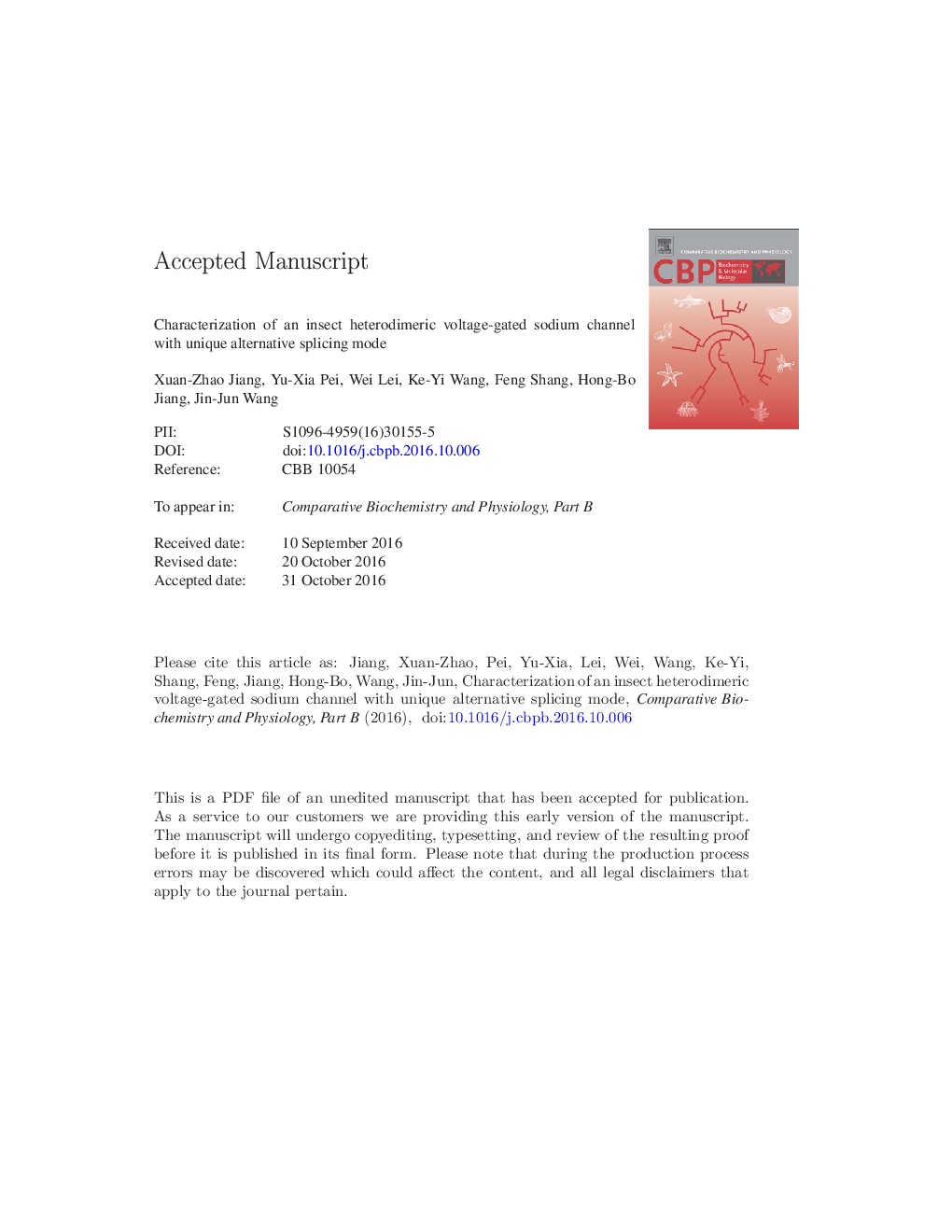| Article ID | Journal | Published Year | Pages | File Type |
|---|---|---|---|---|
| 5510523 | Comparative Biochemistry and Physiology Part B: Biochemistry and Molecular Biology | 2017 | 45 Pages |
Abstract
Recent discovery of the heterodimeric voltage-gated sodium channels (Nav) in two aphid species, Acyrthosiphon pisum and Myzus persicae, aroused interest in exploring whether this kind of channel is conserved for aphids. Herewith, we aim to provide evidence for the conservation of heterodimeric Navs in aphids and investigate whether they have unique splicing patterns. We found that the only identifiable Nav from Toxoptera citricida consisted of two subunits, forming a heterodimeric Nav, which carried an atypical “DENS” ion selectivity filter and a conventional “MFM” inactivation gate, confirming the heterodimeric Navs' conservation within aphids. These unique heterodimeric channels may form a new Nav subfamily, specific to aphids. A more ancient member of four-domain Nav homolog was well preserved in T. citricida, carrying a typical “DEEA” and “MFL” motif. The presence of “DENS” in mammalian Naxs and “DEKT” in a fungus Nav suggested that the heterodimeric Navs may still preserve Na+ permeability. Sequencing 46 clones from nymphs and adults exposed unique splicing patterns for this heterodimeric Nav from T. citricida, revealing 7 alternatively spliced exons, evidencing that exon 5 was no longer unique to Bombyx mori, and exon k/l was semi-mutually exclusive. Two previously undescribed optional exons and a SNP site seemingly unique to aphids were identified. In conclusion, the dimeric Navs might form a new aphids-specific heterodimeric Nav subfamily. This dimeric Nav from T. citricida was characterized with distinguishable alternative splicing modes, exemplified by the discovery of two novel alternative exons and unique usage patterns of alternative exons.
Related Topics
Life Sciences
Biochemistry, Genetics and Molecular Biology
Biochemistry
Authors
Xuan-Zhao Jiang, Yu-Xia Pei, Wei Lei, Ke-Yi Wang, Feng Shang, Hong-Bo Jiang, Jin-Jun Wang,
